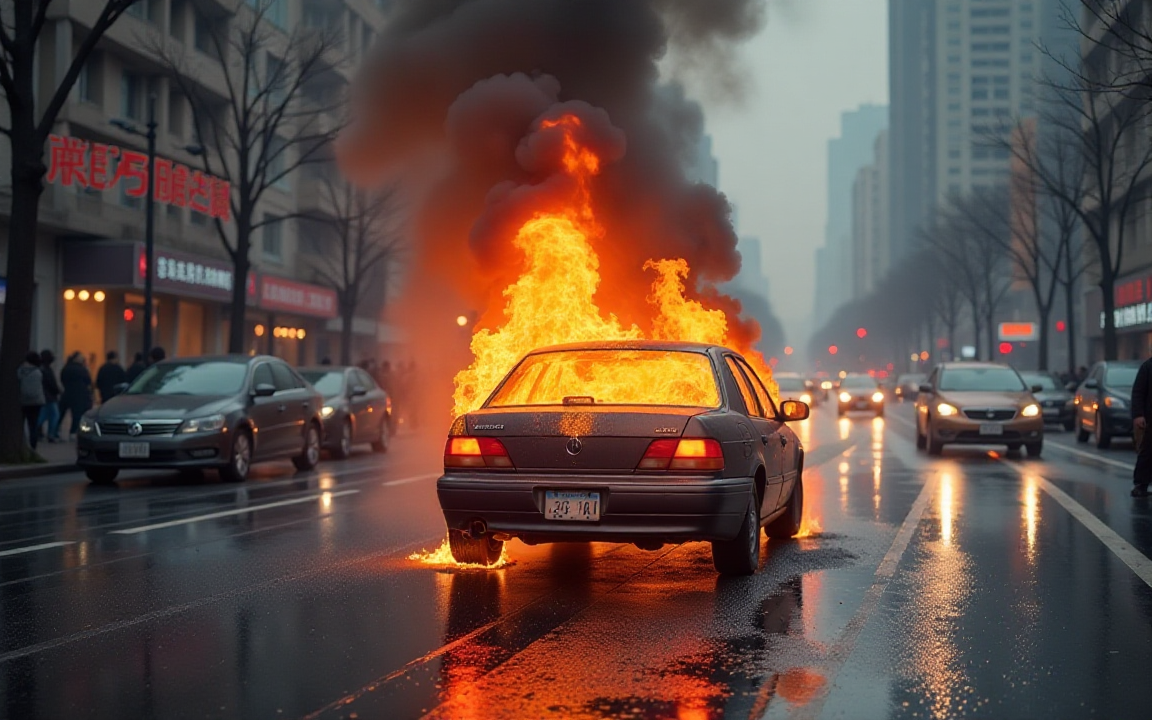One of China’s leading autonomous driving startups, Pony.ai, confirmed that one of its fully driverless robotaxis caught fire in Beijing on 13 May, as per a CNBC report.
Although no passengers were inside the vehicle and no one was injured, the incident has drawn renewed attention to safety standards in China’s fast-expanding robotaxi sector.
The company is currently investigating the cause of the fire, which occurred after the vehicle initiated an emergency stop due to an abnormality.
Pony.ai’s stock plunged over 10% following the incident.
What caused the fire?
According to a company statement, the robotaxi involved in the fire was detected as showing an “abnormal status” at around 9:30 am local time in Beijing.
In response, the vehicle autonomously activated an emergency stop procedure, which is designed to prevent further malfunction or risk.
No collision occurred, and there were no passengers in the car at the time.
Pony.ai said service staff were dispatched immediately and arrived at the scene within two minutes.
However, during their efforts to manage the situation, the vehicle caught fire.
The company noted that its personnel worked in coordination with local authorities to contain the blaze.
The exact reason for the fire has not yet been determined, and a formal investigation is underway.
Videos claiming to show the burning robotaxi circulated on Chinese social media platforms on Tuesday.
The company did not provide additional visuals or footage of the incident.
Robotaxi scale-up in China
Pony.ai, which is listed in the United States, has emerged as one of China’s frontrunners in the autonomous mobility race.
The firm operates a fleet of more than 250 robotaxis across major cities, including Beijing, Shanghai, and Guangzhou.
Its self-driving systems are centrally monitored and designed to respond autonomously in emergency scenarios, such as the one on 13 May.
The fire could prove a setback for the company’s ambitions, especially as it recently announced major partnerships with Toyota, BAIC, and Aion.
These collaborations are aimed at developing a new generation of robotaxis that promise to reduce operational costs by up to 70%.
However, any concerns around system reliability and fire hazards may complicate deployment timelines or lead to regulatory reviews.
EV and robotaxi fire risks under renewed scrutiny
While rare, electric vehicle fires have been a concern in the wider automotive industry, with previous incidents involving other models also drawing global headlines.
The cause of such fires typically involves thermal runaway in lithium-ion batteries, although other technical faults can also be responsible. It is unclear if a similar mechanism was at play in the Pony.ai case.
With the Chinese electric and autonomous vehicle market now a direct competitor to US brands, scrutiny of safety protocols is likely to intensify.
The industry has moved quickly to commercialise robotaxi fleets, but events like this highlight the importance of robust emergency response protocols and system redundancies.
Pony.ai has yet to announce whether it will ground any of its existing fleet or alter deployment plans in light of the incident.
The post Pony.ai robotaxi catches fire in Beijing, shares drop 10% appeared first on Invezz
